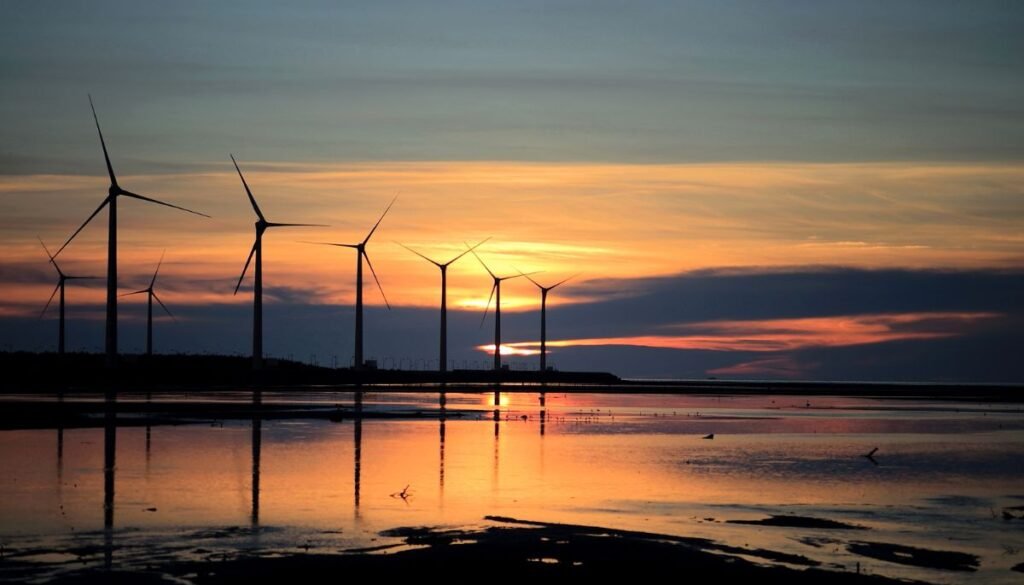
The current energy crisis has sparked a massive surge in the adoption of renewable energy sources like solar and wind power.
In fact, the world is expected to add as much renewable power capacity over the next five years as it did in the past 20 years. This rapid growth is driven by countries seeking to reduce their reliance on imported fossil fuels, which have seen dramatic price spikes due to global events.
The International Energy Agency (IEA) Reports that total renewable power capacity will grow by an impressive 2,400 gigawatts over the next five years, equivalent to China’s entire current power capacity. This is a significant increase from previous forecasts, highlighting how quickly governments are ramping up support for renewables.
Renewables are expected to account for over 90% of global electricity expansion in the coming years, surpassing coal as the largest source of electricity generation by early 2025. The IEA’s Executive Director, Fatih Birol, notes that this is a “historic turning point” towards a cleaner and more secure energy system.
The war in Ukraine has been a major driver of renewable growth in Europe, where governments are racing to replace Russian gas with alternatives. The region is expected to add twice as much renewable power capacity over the next five years compared to the previous period. This is not only driven by concerns about energy security but also climate ambitions and the need for countries to reduce their carbon footprint.

Globally, China, the United States, and India are implementing policies and reforms at an accelerated pace to address energy security concerns and climate ambitions. As a result, these countries will account for nearly half of new global renewable power capacity additions over the 2022-2027 period.
Solar PV and onshore wind are now the cheapest options for new electricity generation in most countries worldwide. Global solar PV capacity is expected to almost triple by 2027, surpassing coal as the largest source of power capacity globally. Meanwhile, global wind capacity will almost double during this period, with offshore projects accounting for one-fifth of the growth.
The report also highlights emerging trends in solar panel manufacturing supply chains, with new policies in the United States and India expected to boost investment in solar manufacturing by up to $25 billion over the next five years. Additionally, biofuel demand is set to expand by 22% globally over this period, driven primarily by growth in the United States, Canada, Brazil, Indonesia, and India.
The report provides a baseline forecast for renewable power capacity growth, as well as an accelerated scenario that assumes even faster growth. Achieving this accelerated scenario would require addressing various regulatory and permitting challenges, expanding grid infrastructure, and deploying more flexibility resources to securely manage larger shares of variable renewables.
Overall, the rapid growth in renewable energy is crucial for limiting global warming to 1.5°C and achieving a net-zero emissions pathway by 2050. The IEA’s report underscores the urgent need for policymakers, investors, and companies to work together to accelerate the transition to a low-carbon economy.
The accelerated scenario outlined in the report assumes that governments will continue to implement policies and regulations that support the growth of renewables, such as tax credits, feed-in tariffs, and renewable portfolio standards. It also assumes that the cost of solar panels and wind turbines will continue to decline, making them even more competitive with fossil fuels.
Achieving this accelerated scenario would require significant investments in grid infrastructure, energy storage, and smart grids to manage the increased penetration of variable renewables. It would also require addressing regulatory challenges and permitting hurdles that can slow down the deployment of renewable energy projects.
The report’s findings have important implications for investors, policymakers, and companies looking to capitalize on the growing demand for renewable energy. As the world transitions to a low-carbon economy, there will be significant opportunities for investment in solar panels, wind turbines, and other renewable energy technologies.
In conclusion, the rapid growth in renewable energy is a critical step towards limiting global warming to 1.5°C and achieving a net-zero emissions pathway by 2050. The IEA’s report highlights the urgent need for policymakers, investors, and companies to work together to accelerate the transition to a low-carbon economy.
Only on Latest Buzz







One thought on “Renewable Energy Boom: Global Capacity Growth Soars Amid Energy Crisis”